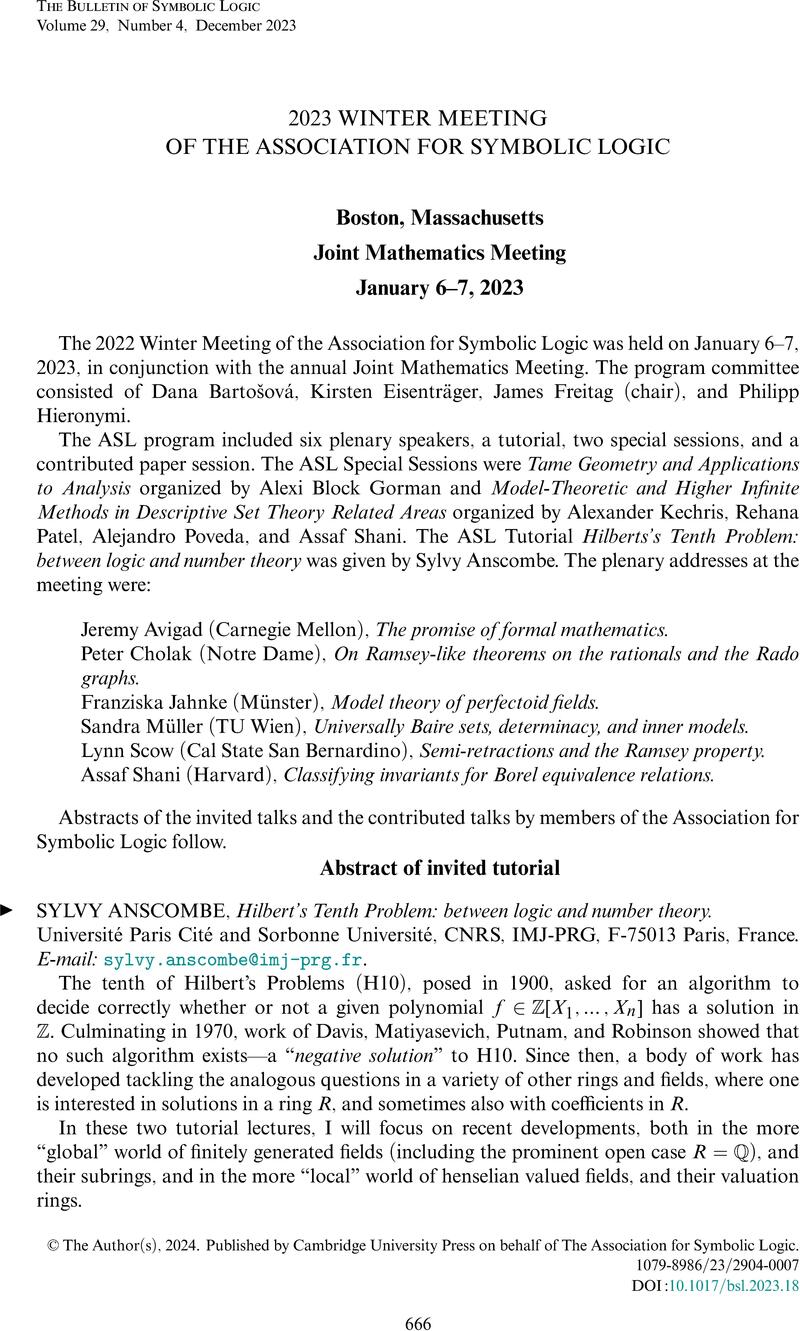No CrossRef data available.
Article contents
2023 WINTER MEETING OF THE ASSOCIATION FOR SYMBOLIC LOGIC Boston, Massachusetts Joint Mathematics Meeting January 6–7, 2023
Published online by Cambridge University Press: 23 February 2024
Abstract
An abstract is not available for this content so a preview has been provided. Please use the Get access link above for information on how to access this content.

- Type
- Meeting Report
- Information
- Copyright
- © The Author(s), 2024. Published by Cambridge University Press on behalf of The Association for Symbolic Logic



